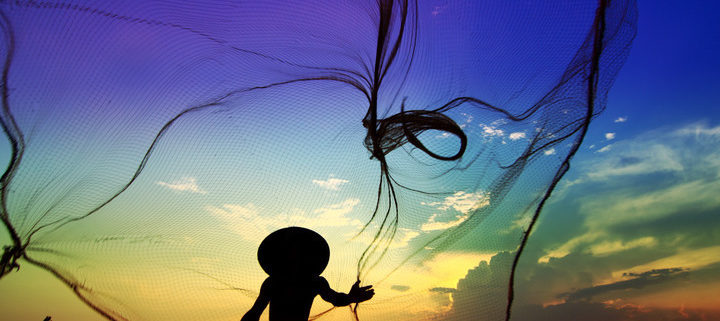List of Damages by Hydropower Dams in the Mekong Basin
Dr. Lilliana Corredor © 5 December 2015
Founder, Scientists for the Mekong
You can download the PDF document (revised 10 December 2015) here:
List of Damages by Hydropower Dams in the Mekong Basin1.pdf (3.7 mb)
Scientists for the Mekong offer a list of the “cascade effect” of the damages resulting from Hydropower Dams on the Mekong basin. Meaning, that one factor leads to another and so forth. This is a better term than a ‘domino effect’ given we are also talking of a Cascade of Dams being built and many more planned for the region.
This is an excerpt of our article by L. Corredor (2015)[i].
- Dams will block the main stream of the Mekong River and major tributaries. As a result,
- Dams will block migratory routes for fish and other aquatic organisms – both on the main stream of the river and its tributaries.
- Dams will also reduce water quality, and
- Dams will reduce significantly the amounts of vital rich nutrient soils (alluvium) carried by the river – vital to fisheries, agriculture downstream and the Mekong Delta.
- As a result of all the above, dams will jeopardize the reproductive success of migrating fish species. Consequently,
- Dams will reduce the numbers of fish species, as well ,
- Dams will reduce fish populations’ density. Therefore,
- Dams will cause irreparable damage to the fisheries of the Mekong basin, and
- Dams will cause a dramatic loss in biodiversity – though loss of fish species, as consequence of blocking the fish migration routes.
- Dams will alter the hydrological flow of the Mekong River and its Tributaries, with dangerous consequences for the whole ecosystem and riverine communities. That is,
- Dams will create fluctuations in water levels – harmful to riverine communities both during the dry season and the wet seasons.
- Water withdrawal for the dams’ reservoirs during the dry season will endanger aquatic populations, and will also harm upstream riverine communities by depleting water volumes necessary for their farms, aquaculture ponds and daily living needs.
- Dams will endanger the lives and properties of downstream riverine communities by exposing them to sudden flash flooding every rainy season, as dams are forced to open their gates and release excess water to avoid collapse.
- Flash flooding by Dams during the wet season will result in loss of homes, livestock, harvests and perhaps even lives (yet there is no compensation offered – as has already occurred in southern Cambodia).
- Downstream communities may be exposed to added danger if the Don Sahong Dam collapses as a result of tremors (given that it will be built on a Geological Fault) – with incalculable disastrous consequences.
- Dams will ensure damage to the RAMSAR Wetlands in NE Cambodia, through extreme drainage (in the dry season) and flooding (in the wet season) – as well as to all wetlands in the basin, particularly the very important and productive area of Tonle Sap.
- Dams damage to Wetlands puts at risk the food security, livelihoods and even the lives of thousands of people. In NE Cambodia alone, dams will imperil 20,000 people living in the RAMSAR wetlands.
- Dams will devastate aquatic populations of flora and fauna; and endanger bird populations – both in riverine areas and in Wetlands – as a result of seasonal excessive flooding and drainage of the Wetlands.
- Dams will ensure the extinction of the Irrawaddy dolphins, the Giant Mekong Catfishes and dozens of other fish and aquatic species. As a result,
- Dams will alter the balance of the food chain and thereby,
- Dams will alter the whole Mekong ecosystem not only hydrologically, but also its fauna & flora.
- Dams will cause irreparable damage to the Tonle Sap River and the Great Lake through loss of migrating fish species, therefore loss of fisheries, reduced water quality and loss of alluvium.
- By reducing fisheries and biodiversity, Dams will reduce the food supply in all of the Lower Mekong Region. Therefore,
- Dams will put at risk the Food Security of 60 million people – in Thailand, Laos, Cambodia & Vietnam.
- Dams will also jeopardize the livelihoods of millions of poor families in communities along the Mekong River – both in the main stream, as well as, in many tributaries – through the reduction of fish supplies and productive agricultural lands. Therefore,
- Dams will result in increased poverty. Consequently,
- Dams will compromise the health of all riverine communities along the Mekong River and their tributaries, as well as those along the Tonle Sap and Great Lake (40 Million people) – by the reduction of fish and agricultural food sources. In addition,
- Dams will increase the release of arsenic from permanently flooded wetlands’ soils. This, in turn, will contaminate groundwater, which is the source of drinking water wells. Hence,
- Dams will increase the risk of ‘Arsenicosis’ a fatal condition, through arsenic-laced drinking water. Thus, putting in peril the lives of millions of people in the Lower Mekong basin.
- Hydropower Dam projects are built on Human Rights Violations. In Laos, communities are denied the Right to Freedom of Expression. Any opposition or criticism of such projects is harshly punished (as per Penal Code 46 by Laos), including: jail sentences of 5-15 years with fines, disappearances and killings. Free, Prior and Informed Consent (FPIC) has not taken place or is substandard. Opposition is also harshly dealt with in Thailand and Cambodia, with jail sentences, deportation and killings of activists and journalists that have opposed government plans.
- Dams have already displaced thousands of people, and will displace hundreds of thousands more, along the main stream of the Mekong River and its tributaries – to make space for the Dam’s reservoirs.
- Dams have already caused, and will cause further untold suffering and despair to displaced communities now and in the future: psychologically, physically and emotionally – as a result of being uprooted from their homes, losing their property and livelihood, by being relocated to unknown areas far away from the river and the life they know; and by having to discover a new way to make a living.
- Dam developers and host governments have only offered substandard compensation to displaced communities, to date.
- Dams cause loss of water supply for upstream communities, resulting in loss of food supply and damage to their livelihood– yet do not offer compensation
- Dams cause flash flooding, resulting in loss of property, harvests, livestock, food supply, and the livelihood of downstream communities – yet do not offer compensation
- Dams will ensure the loss of many cultural sites of importance to local communities and ethnic groups – for which there is no compensation possible as these sites are irreplaceable.
- Dams will cause irreparable damage to the Mekong Delta – through the loss of fisheries; immense loss of nutrient rich sediments (alluvium); loss of thousands of hectares of fertile agricultural soils; intrusion of salt water in fertile agricultural lands rendering them unusable; reduction in the production of rice, fruits and vegetables; reduction in income for local farmers, fishermen and government. As a result,
- Dams will cause irreparable and massive loss of revenue for Cambodia and Vietnam calculated in Billions of Dollars – through the huge loss of exports.
- Dams reservoirs will emit millions of tons of Green House Gases (Methane and CO2) continuously over the first 10 years – through the decomposition of organic material drowned in the reservoirs. Such emissions are released into the atmosphere as methane laden waters from the bottom of the reservoir pass through the turbines and spillways; as well,
- Dams will lead to the continuous emission of millions of tons of Green House Gases (Methane and CO2) produced throughout the lifetime of the dam by the “drawdown zones”. These are the areas resulting from drying and flooding of wetlands and riverine areas, during the dry and wet seasons.
- Consequently, Hydropower Dams in the Mekong basin will intensify Climate Warming.
In light of the above, the notions that Hydropower Dams in the Mekong Basin are: sustainable, ethical, socially and economically beneficial, and they produce “Green and Clean energy” … is not only false and ludicrous, but also indefensible.
We conclude that Hydropower Dams will have disastrous consequences on the whole Lower Mekong Region and that they must be HALTED and no further Dams built for the benefit of all.
————————————–
Article written by:
Dr. Lilliana Corredor
Founder & Coordinator, Scientists for the Mekong
NSW, Australia
B.Sc. Biology & Chemistry
M.Sc. Marine Biology
Maitrisse General Oceanography
D.E.A. Biological Oceanography
Ph.D. Behavioural Sciences
Environmental Educator
Email: Lilliana Corredor
Website: https://scientists4mekong.com
Weekly updates: https://www.facebook.com/scientists.for.the.mekong
Twitter (1): https://twitter.com/Amarial1 and
Twitter (2): https://twitter.com/Amarial3
——————————————–
ACTIONS You Can Take
- Sign our Petition to SAVE the Mekong River – 60 Million people & 71 dolphins [ii]
- Sign the Petition by International Rivers: 10 Reasons Why Climate Initiatives Should Not Include Large Hydro [iii]
————–
REFERENCES
The list of references is much too long for this blog. We refer the reader to the original document from which this list comes:
[i] COP21 – Mekong Dolphin Extinction, Hydropower & Climate Change
https://scientists4mekong.com/2015/11/25/cop21-mekong-dolphin-extinction-hydropower-climate-change/
[ii] SAVE the Mekong River – 60 Million people & 71 dolphins https://secure.avaaz.org/en/petition/Mr_Viraponh_Viravong_Deputy_Minister_of_Energy_and_Mines_Lao_PDR_We_call_on_you_to_SAVE_the_MEKONG_River_DOLPHINS_Suspen/?nQAhpab
[iii] 10 Reasons Why Climate Initiatives Should Not Include Large Hydro – by International Rivers – November 2015
http://org.salsalabs.com/o/2486/p/dia/action3/common/public/?action_KEY=18739



